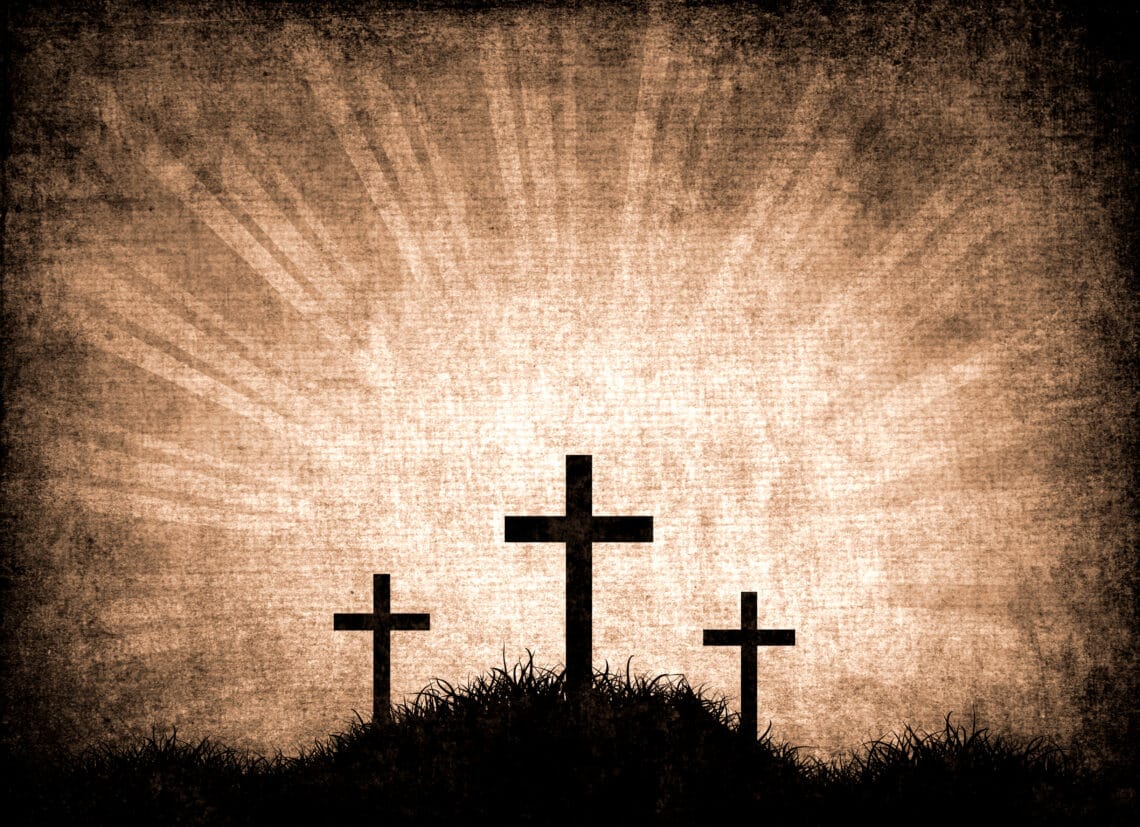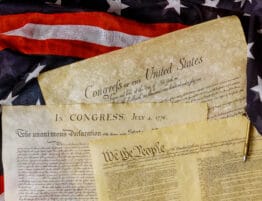
On March 4, 2007, the Discovery Channel aired “The Lost Tomb of Jesus,” a special directed by James Cameron, the Oscar winning director of the movie Titanic. Cameron based his work on a book released that day, The Jesus Family Tomb, by Simcha Jacobovici and Charles Pellegrino. This documentary was based on a discovery made in 1980 in Talpiot, a suburb of Jerusalem where a large tomb containing ten caskets was found. Although scholars and archaeologists at that time did not associate this finding with any New Testament characters, the claim has recently arisen that this is the tomb of the Jesus and several of His family members.
Is this a titanic discovery that could change history, or is this a lot of overblown hype? If this is indeed the tomb of Christ and His remains are in one of the ossuaries, this would be a devastating blow to the New Testament teaching regarding the resurrection of Christ. However, as in other attempts to recreate Jesus, we find ourselves dealing with a flawed theory built on unlikely scenarios, fishy facts, and Hollywood hype.
Scholars Speak
The tomb was discovered in 1980, so we have known about this site for nearly thirty years. Its lack of recognition by the scholarly community as a tomb of significance to New Testament characters is telling. Most scholars did not associate the crypt with Jesus. This includes Professor Amos Kloner who worked on the tomb and is one of Israel’s most prominent archeologists. Kloner states that this was a non-event and dismisses Cameron’s efforts as crass profit-seeking.
Likewise, Joe Zias, curator for anthropology and archeology at the Rockefeller Museum in Jerusalem from 1972 to 1997, and the one who personally numbered the Talpiot ossuaries, stated that Cameron is not an archaeologist and that “projects like these make a mockery of the archeological profession.”{1}
Finally, William Dever, an expert on near eastern archaeology and anthropology who has worked with Israeli archeologists for five decades, affirms that specialists have known about the ossuaries for years. According to Dever, “The fact that it’s been ignored tells you something…. It [the film] would be amusing if it didn’t mislead so many people.”{2}
Newsweek Magazine writes, “Good sense, and the Bible, still the best existing historical record of Jesus of Nazareth, argue against Jacobovici’s claims.”{3} Time Magazine states that Jacobovici’s book is “…too dependent on stretched scholarship and conjecture to make its title case.”{4} The fact that the top scholars and popular periodicals see no significance regarding the Talpiot tombs and Jesus’ life is extremely significant. The lack of endorsement should have us questioning the claims of Cameron and Jacobovici.
Highly Improbably Scenarios
Another reason Cameron’s theory should be questioned is that this theory is built on two highly improbable scenarios. The first improbable scenario is the secret marriage of Jesus to Mary Magdalene. This theory was introduced in the novel The Da Vinci Code; I have dealt more extensively in a separate article entitled “Decoding Fact From Fiction in The Da Vinci Code.”
Here is a brief overview of why this allegation of a secret marriage should be rejected. First, the New Testament says nothing of a secret marriage. In fact, all the evidence points against any marital relationship between Jesus and Mary Magdalene. In the Gospels, women are identified with their male counterpart; however, Mary is never paired with Jesus. Rather, she is identified with her hometown of Migdal and is thus known as Mary Magdalene. Secondly, at the cross Mary Magdalene is present along with Jesus’ mother Mary. In his dying moments, Jesus addresses His mother and cares for her needs but says nothing to Mary Magdalene. It is very strange that He would address His mother but say nothing to His “wife” standing next to her. Although I could continue with more examples, I will end with this: At the resurrection, Mary sees the risen Christ for the first time at the tomb, and she exclaims, “Rabboni!” or “My teacher!” This is a very odd way to address one’s “husband,” especially if He has just risen from the dead! This exclamation is more fitting as a disciple’s response to her Lord. For these reasons, one cannot build a case from the New Testament that Jesus and Mary Magdalene were married.
A second important historical source comes from the writings of the Church Fathers. These early Church leaders, who were writing as early as the late first century, say nothing of a marriage between Jesus and Mary. In their writings they say very little of Mary Magdalene and what they do mention of Mary is consistent with the Gospels. This is strange if Mary had been the wife of Jesus. We would expect many essays written debating the nature of their child. How much of the divine nature was passed on to the offspring of Jesus would have been a very significant issue to the early church leaders.
Just as is done in The Da Vinci Code, Cameron and Jacobovici appeal to the Gnostic writings found at Nag Hammadi. (For a more extensive treatment, see my article “Decoding Fact From Fiction in The Da Vinci Code: Part 2”) Nearly three generations after the apostles, the Gnostics began to refashion Jesus into their image. In about the late second century AD, Gnostic Gospels and other alleged apostolic works began to appear, especially in Egypt. At Nag Hammadi, Egypt, a library of Gnostic works was found. These works were written in the late second to fourth century AD, so they could not have been written by the Apostles. They also contradicted major teachings of the New Testament and contained fanciful myths of Jesus. For these reasons, they were never considered as part of the inspired canon of scripture. Cameron appeals to these works, most specifically to the Acts of Philip and the Gospel of Mary Magdalene.
Even within these works, there are only two passages that are referenced, neither of which build a case for a marriage between Jesus and Mary Magdelene. First, in the Acts of Philip, dated from the third century AD, Peter and the other disciples are arguing with Mary regarding information she claims to have received from Jesus which the other apostles did not. It is strange that the disciples argue with the “wife” of Jesus over this. If she had been His wife, they should have expected her to have information they would not. Also, she never appeals to her “marriage” to Jesus as her defense even though that would have been her best argument to silence their complaints.
Second, in the Gospel of Mary, dated from the third century AD, it is alleged that Jesus often “kissed [Mary Magdalene] on the mouth.” This passage is also not compelling for several reasons. First, we do not know if the word “mouth” is the correct word since it is missing in the original text. He could have kissed her on the hand, head, or other area. The subsequent line of the passage states that this offended the disciples. Why would they have been offended if she had been the wife of Jesus? Third, since the physical realm is impure in Gnosticism, sex was thus regarded as impure. Jesus, the “Master Gnostic,” would not have engaged in marital and sexual behavior. Fourth, Mary is described as the “companion of the savior.” The term “companion” is the Greek word koinonos. This word can be used in reference to a wife, but it is used more often to designate a spiritual brother or sister in the faith. The common term for wife is gyne. Therefore, even these two passages from sources outside the inspired canon do not build a strong case for a secret marriage.
The second unlikely scenario is the case of the stolen body. New Testament scholars on all sides agree that the tomb site of Jesus was known. In the earliest writings, Mark and John identify Jesus being buried in the grave of Joseph of Arimathea, a prominent member of the Jewish council. Not only was the gravesite known, but it was also found empty on the third day. A few skeptics allege that Joseph of Arimathea was a fictional character. However, this would have been a disaster for the disciples to fictionally create such a high profile figure. The Gospels are written well within the first century AD and were circulated during the lifetime of the eyewitnesses, many of whom were looking to discredit the Gospels. (For more information, see the :robe article “Historical Reliability of the Gospels.”) If Joseph of Arimathea had been a fictional creation, it surely and readily would have been found out.
Jesus’ body was buried in Joseph of Arimathea’s tomb on Friday evening. In order for Cameron’s theory to be complete, the disciples, or others, would have had to purchase this large gravesite, steal, and rebury Jesus’ body all within a day. Even if this had been accomplished, we must then accept the idea that the Apostles knew of the Talpiot site and lied about the resurrection. This would mean that the Apostles all suffered and led many, including themselves, to brutal deaths for a lie they themselves had perpetuated. This is highly unlikely scenario, for history shows that men will not die for that which they know and can confirm to be a lie.
Also, if they purchased the tomb site, people outside of the eleven disciples would have known about this site. The Jewish leaders, who were very eager to display the body of Jesus to dispel rumors of his resurrection, would have easily found a tomb with such clear markings. This theory suggesting a secret burial ground unknown to anyone but Jesus’ family is untenable given the mindset and influence of His many enemies.
Fishy Facts
Along with these unlikely scenarios are some fishy facts. First, Joseph, the earthly father of Jesus was from Bethlehem and lived in Nazareth. He apparently died years before Jesus’ ministry began and was likely buried in Bethlehem or Nazareth, not the Talpiot suburb of Jerusalem. It is not reasonable to conclude that Joseph’s body was exhumed and moved to the Talpiot grave within a very short period.
Second, Jesus’ earthly father Joseph could not have afforded such a costly tomb. He was a lower class carpenter, and he probably could not have bought such a large tomb and well adorned ossuaries. Some have alleged that the tomb was donated. However, this creates some problems because people outside the apostles would have then known the tomb site. A secret of this magnitude regarding such a high profile person as Jesus would not have remained hidden.
Third, the inscription on the ossuary reads, “Jesus, Son of Joseph.” However, early followers did not use that title when addressing Jesus; instead that title was used only by outsiders. Would family members and His loyal disciples have given him that title when they had called him by another title throughout his lifetime?
Fourth, James, the half brother of Jesus and leader of the early church, was buried alone near Jerusalem Temple. Eusebius records that James was buried in Jerusalem near the Temple mount. Burying James in Jerusalem would seem strange since Jesus had died thirty years earlier and the “family tomb” was supposedly in Talpiot, Jerusalem.
Fifth, other non-family members are also in the tomb. One tomb with the name Matthew is believed to be referring to the disciple Matthew, who was not a family member. We must ask why Matthew, a non-family member, is in the tomb with the rest of the family while James, the half brother of Jesus, was buried alone.
Hollywood Hype
Finally, we have what appears to be some Hollywood hype. It appears the statistics cited in the special are a bit exaggerated and misleading. The names on the crypt were very common in that day. The name Jesus was popular during that time. Jesus is found on 99 other tombs and 22 ossuaries during that time. The name Joseph was also found on 218 graves and 45 ossuaries. So it would not be unusual to find ossuaries with the names of Jesus and Joseph or even Jesus, son of Joseph.
Mary was also a common name. Among the graves and ossuaries, one-fourth of the women in Jerusalem during the first century were named Mary. Therefore, finding a tomb that has the name Jesus, son of Joseph and Mary should not be so surprising given the fact that these were common names.
The statistician Andrey Feuerverger, who arrived at the 600 to 1 probability figure that Talpiot was the tomb of Jesus of Nazareth and his family seems to have backed off that conclusion in an open letter to fellow statisticians. He says, “I now believe that I should not assert any conclusions connecting this tomb with any hypothetical one of the NT family.”{5}
Feuerverger qualifies his conclusion stating that it was built on the assumptions given by Cameron and Jacobovici. One of their key assumptions is that one of the names on the ossuaries ought to be identified as Mary Magdalene. If the identification of Mary Magdalene with this ossuary is in doubt (which it is), then the statistical probability that this is Jesus’ family tomb is unimpressive.
Moreover, the Mary Magdalene connection to the tomb is unclear.The Greek inscription is Mariamne e Mara,{6} which the filmmaker incorrectly translates as “Mary Known as the Master.” This translation is possible if translated in Aramaic; however, the inscription is Greek. Most likely it is two names: Mary and Martha. Richard Bauckham, Professor of New Testament at the University of St Andrews, states that “‘Mara’ in this context does not mean Master. It is an abbreviated form of Martha, probably the ossuary contained two women called Mary and Martha (Mariamne and Mara).”{7}
Another detail that appears to be hyped is the DNA evidence. It is interesting to note that DNA testing was done on only two ossuaries. If DNA testing had been done on three or four individuals, and that testing did not match the DNA of Mariamne, the theory would be destroyed. As it stands, the so-called “DNA evidence” only proves that the bones of an entombed man and woman were from unrelated people. To extrapolate to the notion that they were married is indeed a stretch. Besides, no independent DNA control samples of Jesus or His family members exist with which to compare these DNA “findings.”
Conclusion
This theory that the bones of Jesus have been found rests on two highly unlikely scenarios, fishy facts, and some Hollywood hype. For these reasons, we should reject Cameron’s attempt to deny the resurrection of Christ and recreate a Jesus contrary both to the New Testament and to history. We should also realize that attempts to refashion Jesus are not new. Attempts to deny the resurrection and remake Jesus have occurred since the time of the Apostles. In fact, I believe that we should be expecting more to come. There seem to be very aggressive attempts by some liberal scholars to fabricate a different kind of Jesus.
For this reason, Christians must be prepared to defend the true Jesus of the Gospels and history. The wrong Jesus leads to a wrong Gospel. The wrong savior and the wrong message cannot lead one to a relationship with God and eternal life. We must follow the example of the Apostles and Church Fathers to be diligent to defend the true teachings of Christ.
Finally, events like these offer great opportunities to share Christ if we are prepared. Christians must not retreat from these challenges but instead must research and examine their faith and the evidence being presented. When we are equipped, we can offer a sound and compelling case for Jesus Christ.
Notes
- Lisa Miller and Joanna Chen, “Have Researchers Found Jesus Christ’s Tomb?” Newsweek Magazine, 5 March 2007. Accessed at www.msnbc.msn.com/id/17328478/site/newsweek/from/ET/.
- Karen Matthews, “Documentary Shows Possible Jesus Tomb,” AP News, 26 February 2007. Accessed at http://tinyurl.com/yu7pbq.
- Miller and Chen.
- David Van Biema, “Rewriting the Gospels,” Time Magazine, 14 March 2007, 56.
- Andrey Feuerverger, Letter to Statistical Colleagues, 8, March 2007, fisher.utstat.toronto.edu/andrey/OfficeHrs.txt
- L.Y. Rahmani, “A Catalogue of Jewish Ossuaries: In the Collections of the State of Israel, 1994” Accessed at http://tinyurl.com/yufzzm.
- Darrell Bock, “Hollywood Hype: The Oscars and Jesus’ Family Tomb, What Do They Share?” February, 26, 2007. Accessed at dev.bible.org/bock/.
Dr. Patrick Zukeran, former Probe staffer, is the founder and Executive Director of Evidence and Answers, a research and teaching ministry specializing in Christian apologetics, the defense of the Christian faith. He is the host of the radio show Evidence and Answers (www.evidenceandanswers.org). Pat is the author of several books including The Apologetics of Jesus co-authored with Norman Geisler; God, Eternity, and Spirituality (ed.); and Unless I See . . . Is There Enough Evidence to Believe? Pat is a popular conference speaker and he also serves as an adjunct faculty for several colleges and institutes worldwide. He earned a B.A. from Point Loma Nazarene University, a Master of Theology (Th.M.) from Dallas Theological Seminary, and a Doctorate of Ministry (D.Min.) in Apologetics from Southern Evangelical Seminary.
Copyright © 2020 Probe Ministries. This document is the sole property of Probe Ministries. It may not be altered or edited in any way. Permission is granted to use in digital or printed form so long as it is circulated without charge, and in its entirety. This document may not be repackaged in any form for sale or resale.








